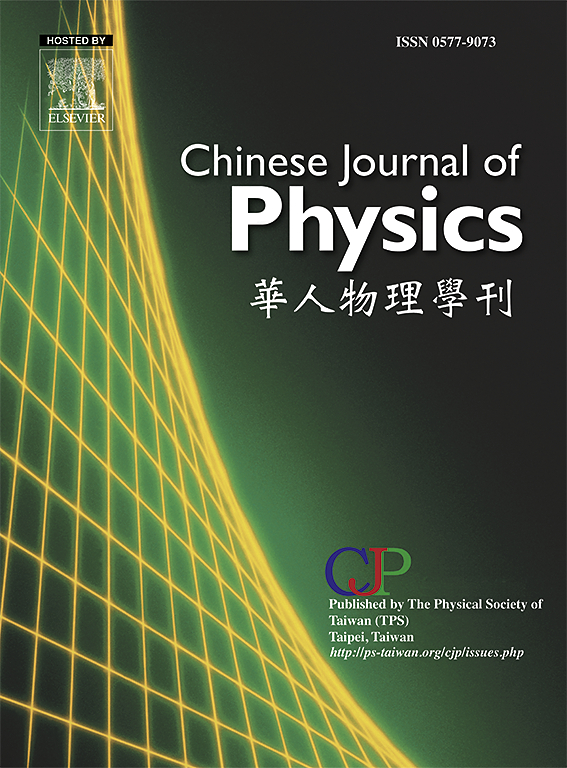利用光栅辅助同向耦合器实现 III-V 和 SOI 混合平台之间的高光学耦合
IF 4.6
2区 物理与天体物理
Q1 PHYSICS, MULTIDISCIPLINARY
引用次数: 0
摘要
近年来,在硅光子平台上异构集成有源 III-V 材料结构的技术取得了长足的进步。之前的大部分工作都是利用绝缘体上硅(SOI)平台和比常用的 220 纳米厚硅层更厚的波导来实现 III-V 波导和 SOI 波导之间的高耦合。较厚的 SOI 波导使两个异质波导结构之间的有效折射率更接近,从而实现更好的共振条件。在这里,我们通过采用光栅辅助同向耦合器(GACC)方法,展示了从有源 III-V 结构到 SOI 波导与标准 220 纳米硅波导之间的出色光耦合。GACC 光栅结构可在 III-V 和硅晶片的任一侧形成。采用 GACC 方案,可以使用较厚的粘合剂来粘合两种不同的材料。模拟验证了使用 100 nm 厚的 DVS-BCB 作为粘合层可获得 94% 以上的能量耦合效率。在 1550 nm 附近 40 nm 波长范围内都能保持较高的耦合性能。混合结构超模之间良好的相位匹配和模式匹配可实现高耦合效率。本文章由计算机程序翻译,如有差异,请以英文原文为准。
High optical coupling between hybrid III-V and SOI platform with grating-assisted co-directional couplers
The technology for heterogeneously integrating active III-V material structures on silicon photonic platforms has gained considerable advancement in recent years. Most of the prior work utilizes the silicon-on-insulator (SOI) platform with a thicker waveguide than the popular 220 nm thick silicon layer to achieve high coupling between the III-V waveguide and SOI waveguide. The thicker SOI waveguide results in closer effective refractive indices between the two heterogeneous waveguide structures to achieve better resonance conditions. Here, we demonstrate excellent light coupling from an active III-V structure to an SOI waveguide with a standard 220 nm Si waveguide by incorporating the grating-assisted co-directional coupler (GACC) method. The GACC grating structure can be formed on either side of the III-V and Si wafers. With the GACC scheme, a thicker adhesive for bonding the two different materials can be used. The simulation verifies that over 94 % energy coupling efficiency can be obtained by using a 100 nm thick DVS-BCB as the bonding layer. High coupling performance can be maintained over a 40 nm wavelength range around 1550 nm. The high coupling efficiency can be achieved with good phase matching and mode matching between the super-modes of the hybrid structure.
求助全文
通过发布文献求助,成功后即可免费获取论文全文。
去求助
来源期刊

Chinese Journal of Physics
物理-物理:综合
CiteScore
8.50
自引率
10.00%
发文量
361
审稿时长
44 days
期刊介绍:
The Chinese Journal of Physics publishes important advances in various branches in physics, including statistical and biophysical physics, condensed matter physics, atomic/molecular physics, optics, particle physics and nuclear physics.
The editors welcome manuscripts on:
-General Physics: Statistical and Quantum Mechanics, etc.-
Gravitation and Astrophysics-
Elementary Particles and Fields-
Nuclear Physics-
Atomic, Molecular, and Optical Physics-
Quantum Information and Quantum Computation-
Fluid Dynamics, Nonlinear Dynamics, Chaos, and Complex Networks-
Plasma and Beam Physics-
Condensed Matter: Structure, etc.-
Condensed Matter: Electronic Properties, etc.-
Polymer, Soft Matter, Biological, and Interdisciplinary Physics.
CJP publishes regular research papers, feature articles and review papers.
 求助内容:
求助内容: 应助结果提醒方式:
应助结果提醒方式:


